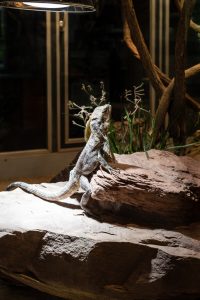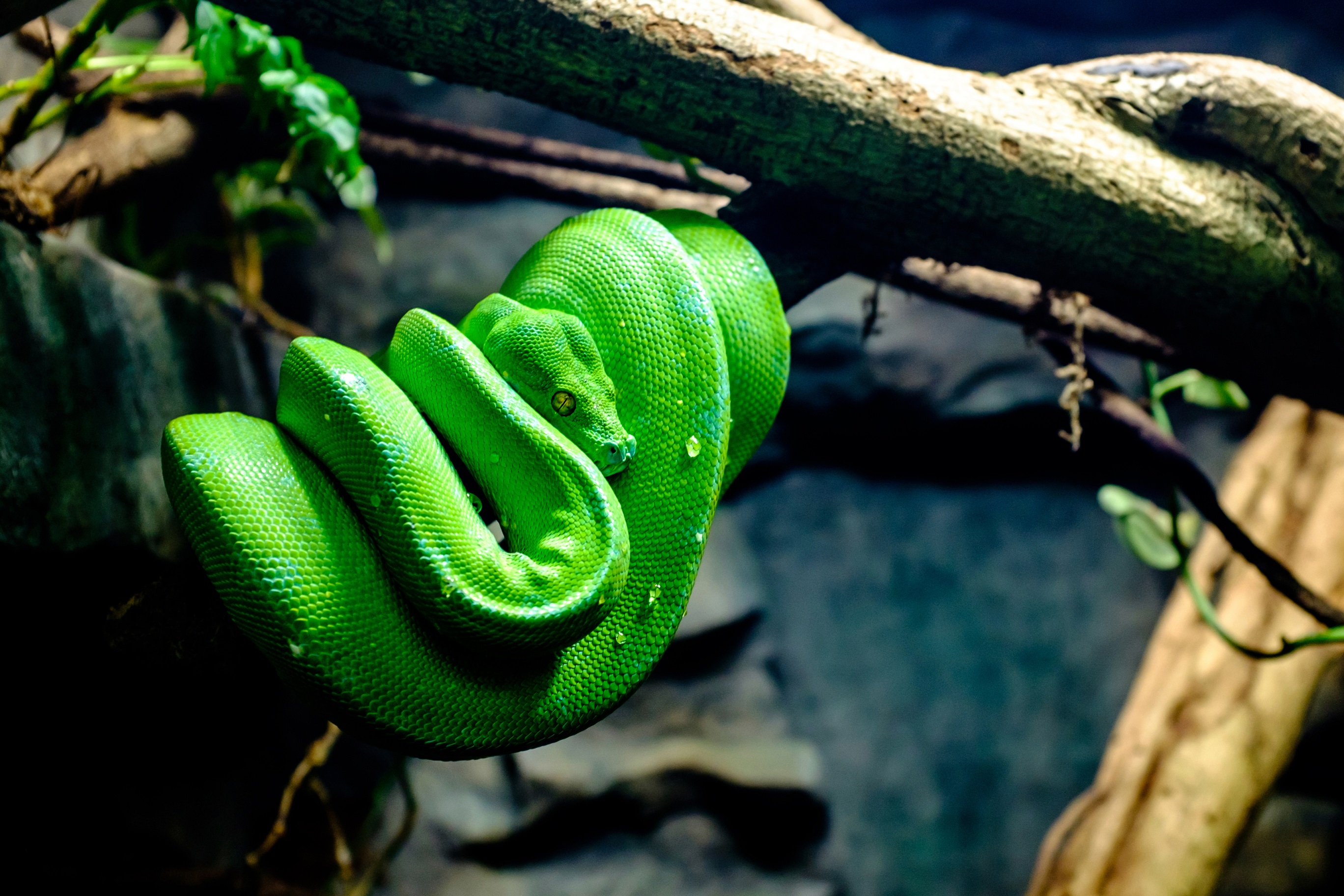Cozy Comforts
Pet Age Staff //March 29, 2017//
By Jennifer Higgins
What better way to enjoy your reptilian family member than to display and maintain it in one of the most natural indoor habitats: a terrarium! Many reptile hobbyists are no longer satisfied with a tank containing a few pieces of rock work and a plastic plant or two. It has become more of a trend and practice for herp hobbyists—and even for novice reptile owners—to “step up their game” by creating a living habitat of live plants, mosses and natural or mixed substrates.
These mini rainforest or desert habitats not only look great, but they also create a more natural environment for customers’ scaled and tailed friends. Even better, the more natural the environment, the more likely pet owners will have the opportunity to witness natural behaviors from these charismatic creatures.
Per Aqualand Fact Sheets, a few of the easiest terrarium reptiles to keep include water dragons, green anoles, house geckos, fire bellied toads and green vine snakes, just to name a few. Pet store owners may be limited in the diversity of reptile species they keep on the sales flo
or, but there will always be the need for accessories and add-ons to complete their reptile terrarium microcosm.
T-Rex Products co-owner David Hanono has honed in on retailers’ growing demand for natural reptile habitat components and has observed that reptile hobbyists like to create their own semi-custom substrates and landscapes, or “Terra-scapes.”
“At T-Rex Products, we feel the trend is leaning towards terrariums being decorated with natural products to mimic how the animal would be surrounded in their natural habitat,” Hanono said. “In nature, environments are not made up of only one substrate and a couple of plastic plants. There are multiple substrates, rocks, bark, moss and all sorts of natural ‘décor’ that animals use to climb, hide and bask. Therefore, T-Rex Products introduced our TerraScapes series of natural décor items which includes the TerraAccents and TerraMix Substrates.”
Hanono wants retailers to understand, however, that these habitat components must be set up in their stores to represent the final product. It is important to exhibit the pieces together to successfully seal the deal.
Prioritizing Accessorizing
Speaking of accessories, Zoo Med also carries Eco Earth Coconut Fiber Substrate. This product—which comes in brick form or loose—is not only natural in color and texture, but it is also eco-friendly. Together, with Zoo Med’s Hydroballs underneath the coconut substrate, a drainage layer is created for optim um plant growth and humidity. Add to this a Repti Rapids LED Waterfall in either rock or wood, a few recommended live plants as well as the requisite heat, UV light and temperature management features and BAM! You have satisfied herp-centric customers who, with the help of reptile-savvy retailers, will be proud of their ingenuity in putting together the perfect herp habitat.
um plant growth and humidity. Add to this a Repti Rapids LED Waterfall in either rock or wood, a few recommended live plants as well as the requisite heat, UV light and temperature management features and BAM! You have satisfied herp-centric customers who, with the help of reptile-savvy retailers, will be proud of their ingenuity in putting together the perfect herp habitat.
Stephen Ayer, owner of Jabberwock Reptiles in Winchester, Massachusetts, not only sells an eclectic collection of reptiles, but also the accessories to create an ideal habitat for them. His store offers a limited variety of live plants for terrariums and the lesser known “fawnariums,” yet Ayer said his customers “desire a simpler, more user-friendly, habitat setup.”
However, Ayer offers substrate drainage components such as Zoo Med’s Hydroballs, which help with humidity levels, and Exo Terra, which manufactures Monsoon misters.
Feelin’ Hot, Hot, Hot
Reptiles can only thermoregulate by positioning themselves in or on a rock or platform. In nature, this is accomplished by basking in the sunlight. In a home or indoor setting, this requires providing our scale-covered pals with a raised basking surface/structure as well as access to artificial light and heat sources. Pamela Morisse of Zilla, run by Central Garden and Pet, points out that Zilla is a source for both items. The company features a Light and Heat Combo Fixture, which provides UV light, visible day light and infrared heat all in one fixture, and a Basking Platform that allows them to position themselves and soak up some rays or escape the “elements” by going underneath the platform.
“Zoo Med’s PowerSun High Intensity Discharge Metal Halide UVB Lamp and fixture emits UVA, UVB and heat all from one lamp; this High Output UVB lamp is perfect for large habitats,” said Ashley Rademacher, animal care and education coordinator for Zoo Med Labs, Inc. “The proprietary Zoo Med lamp construction creates a true flood-lamp effect, eliminating dangerous UV ‘hot-spots’ common to other metal halide reptile lamps and is covered by a full one year warranty.
“These lamps and fixtures are a great choice for large reptile terrariums, as the UVB can reach a greater distance than any of our other UVB lamps to date,” Rademacher added. “The Integrated ballast in the fixture makes these products easy to install and use.”
Not all reptile enthusiasts have the extra time and resources to invest in delicate selection of items to produce a terrarium of their own creation. Enter the “Starter Kit.”
Customized for the species of reptile they will accommodate, starter kits contain an enclosure (tank, screened item), substrate, synthetic plants, rocks and or platforms, etc., and can be purchased as a single unit—all in a box—for quick assembly at home.
Zilla offers a Tropical Starter Kit that, said Morisse, has a “reflective dome light fixture; a day blue Incandescent bulb for daytime basking and a heat mat that provides low, constant heat.”
Whether catering to the reptile newbie or the seasoned herp hobbyist, pet store owners can be prepared to satisfy their needs with the abundance of product options. And satisfied customers often means return customers.



















